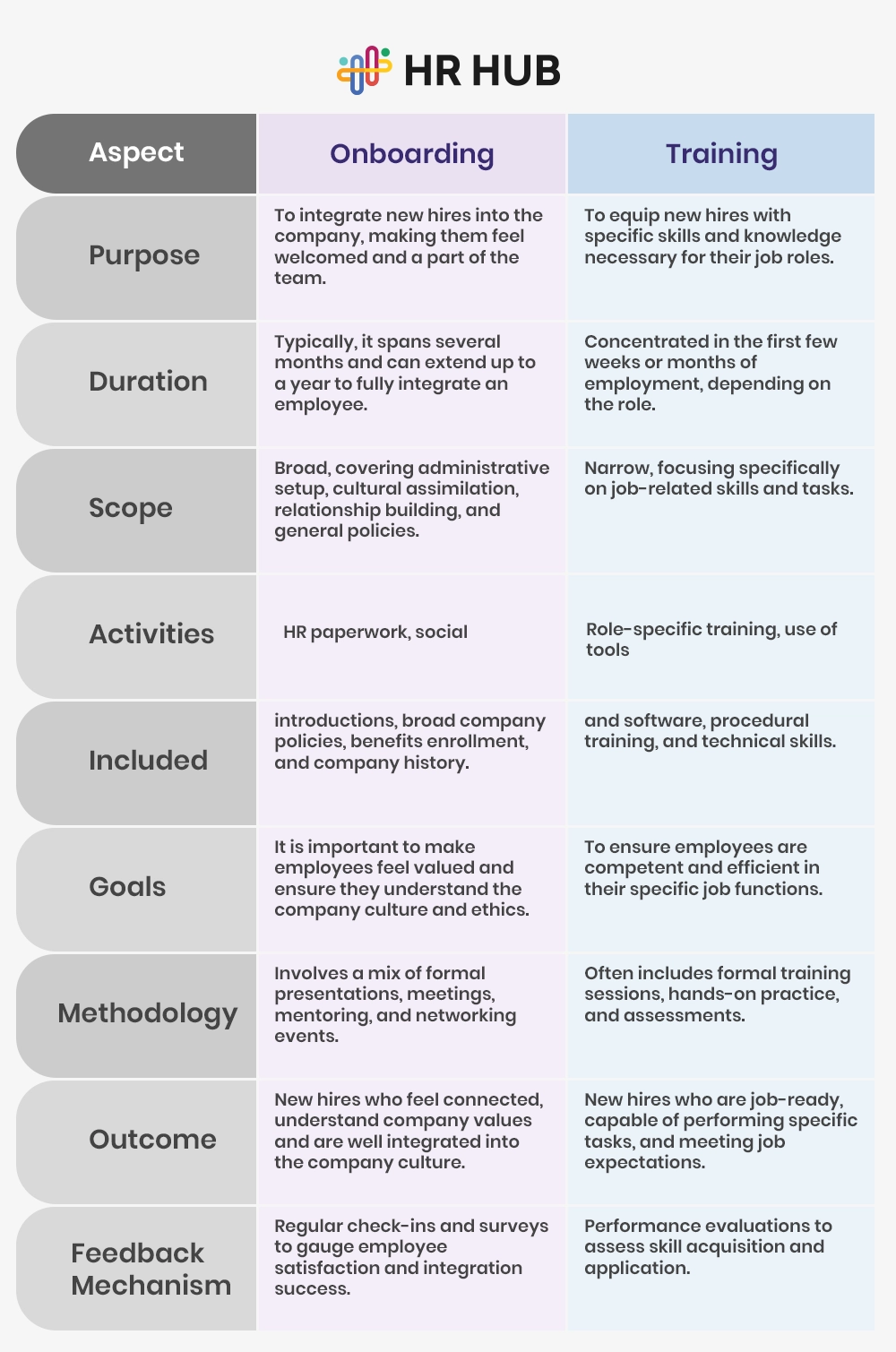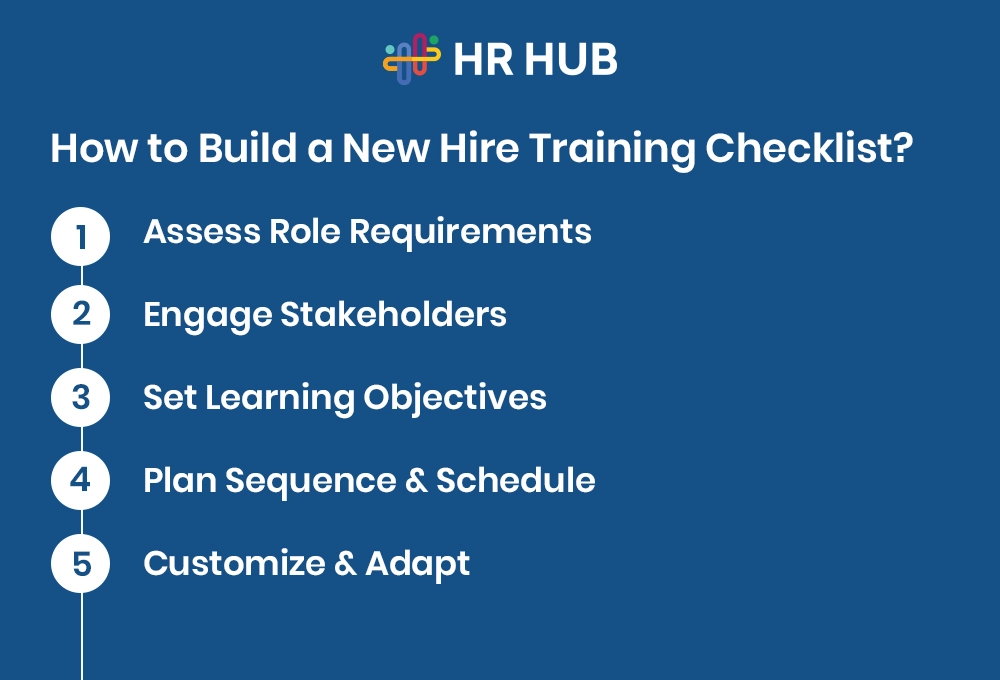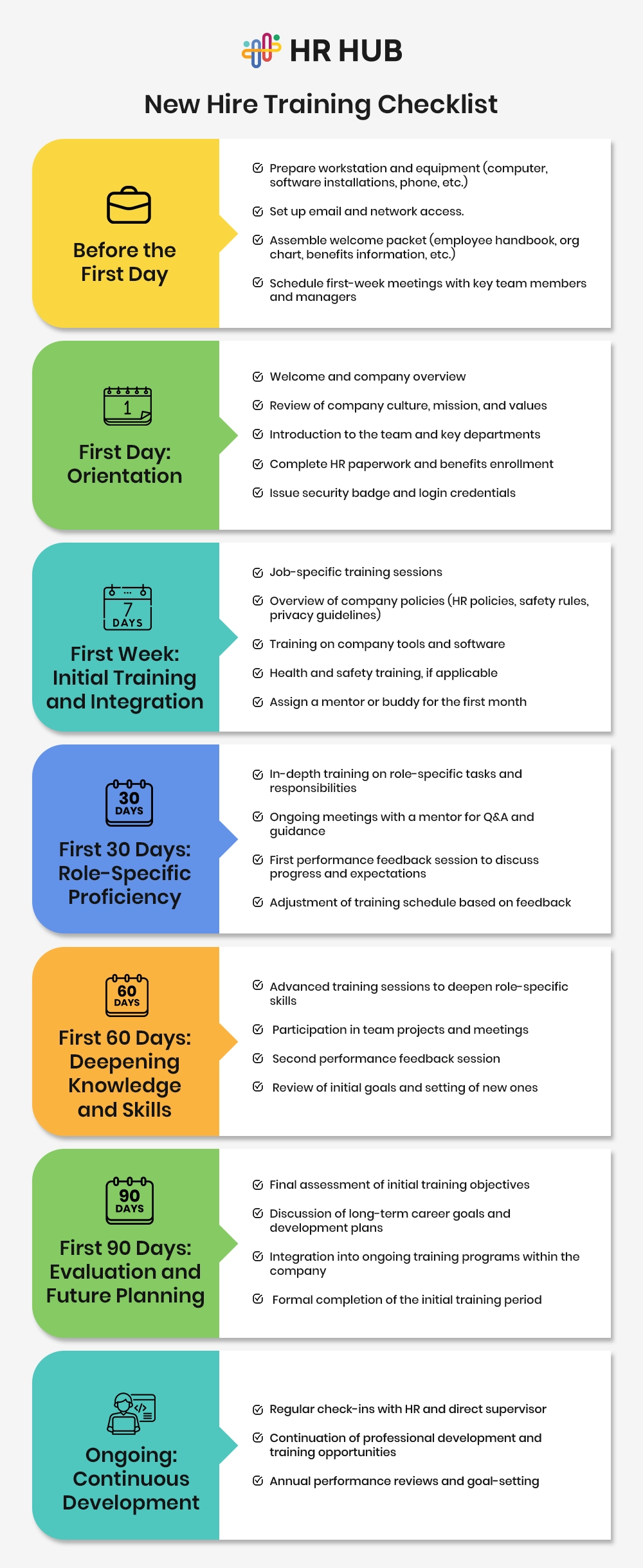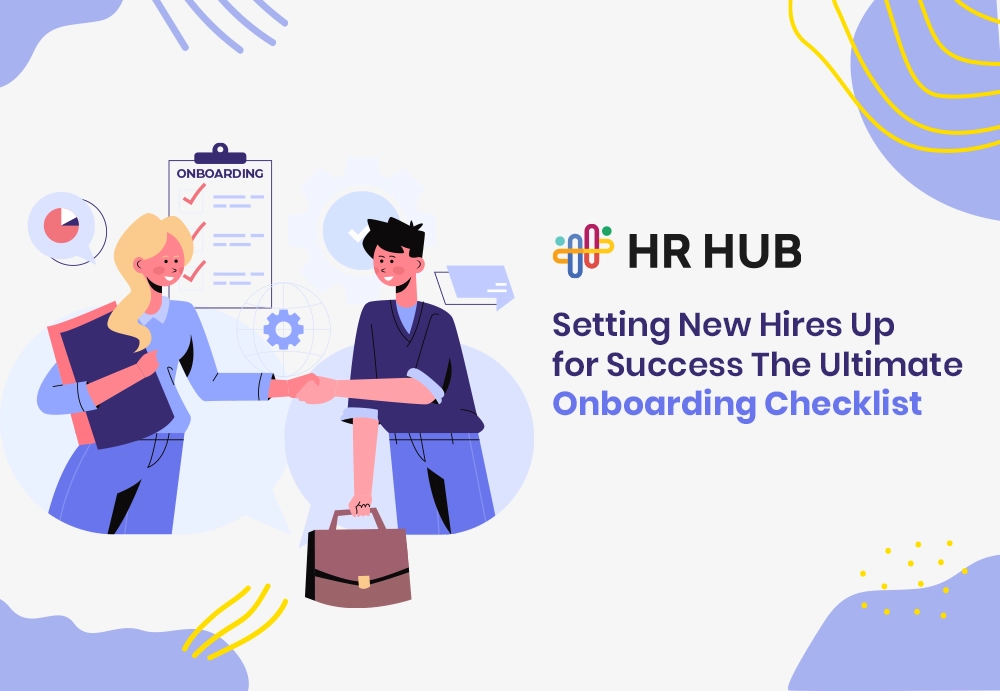Before you dive into the article, let’s explore the highlights of this blog. This blog provides a step-by-step guide to creating a seamless and effective onboarding experience for new employees. Here's what you can expect to learn:
- Importance of Effective Onboarding and Training
- Difference Between Onboarding and Training
- Components of an Effective New Hire Training Agenda
- Creating a Comprehensive Training Checklist
- Best Practices for Training New Hires
- New Hire Training Checklist
- Technology-Enhanced Onboarding with HR HUB
Are You Ready to Transform New Hires into Superstars?
- It is critical for the future performance and retention of new hires to be integrated well into your organization.
- How do you transition these newcomers into productive team members quickly and smoothly?
- Does your training strategy have to include everything in detail?
Consider how a well-crafted training checklist can dramatically streamline your onboarding process and set a strong foundation for your new employees.
What Do You Mean By New Employee Training Checklist?
The checklist is a blueprint for the entire training period and ensures that new hires experience all the steps in giving an adequate introduction to their assigned work.
As such, it's basic for an HR professional and a manager to guide the employee through structured training activities that cover everything from simple operational procedures to the deepest company culture.
Onboarding vs. Training: What's the Difference and Why Does It Matter?
While often used interchangeably, onboarding and training refer to different scopes of integrating a new employee.

Crafting the Ultimate New Hire Training Agenda
An effective training agenda for new hires requires balancing organizational requirements with the employee's capabilities and background. An ideal agenda should include all the crucial aspects that a new hire requires to become proficient at performing their job. Here is how to ensure your agenda meets all requirements:
- Role-Specific Skills Development: Determine the critical competencies and skills. These could be technical skills, industry-specific knowledge, or operational procedures that this new employee needs to master to be an effective worker.
- Comprehensive Policy Overview: All employees should know and comply with the company's policies. These training sections should include everything from HR policies and workplace conduct to privacy laws and IT security. Clear, written copies of such policies, followed by discussion or Q&A sessions, can ensure understanding and compliance.
- Health and Safety Training: This will differ based on the role and the industry. From basic workplace safety protocols to extensive emergency response training, there's a difference from one place to another.
- Technical Tools and Software: Train your new hires on the tools and benefits of HR management software they use daily. This may include hands-on training with specialized software, internal system demonstrations, and even basic troubleshooting.
- Communication and Interpersonal Skills: Good communication is the foundation of a good team. Train new hires on preferred communication channels, appropriate style and tone for your workplace, and key contacts in the organization.
- Cultural Integration: Introduce new hires to the company culture so that they can assimilate. This may include workshops on company values, team-building activities, and an introduction to key stakeholders and teams.
Blueprint for Success: Building Your New Hire Training Checklist
A well-constructed training checklist is essential for systematic and effective training. Here’s how to build one:

- Assessment of Role Requirements: Specify the skills and knowledge required to do the job. Discuss the depth and breadth of training needed with team leaders and other key stakeholders.
- Stakeholder Engagement: Meet with those who will work directly with the new hire, such as direct managers, team members, and internal customers. Their input will help shape the training to the role's needs in practice.
- Development of Learning Objectives: Define exactly what the new hire has to learn within each training segment. State-specific, measurable objectives that contribute toward broader business goals.
- Sequence and Schedule: Order the modules logically so that knowledge acquired before can be used as the basis for later modules. Schedule sessions to balance intensive learning with time taken for assimilation and practice.
- Customization and Flexibility: Customize the checklist according to the requirements of different roles or departments and remain flexible in adjusting the training as per the new hire's progress and feedback.
Best Practices for Training New Hires: Tips and Tricks for a Seamless Experience
Effective implementation of your checklist during training will greatly determine how well and swiftly new hires become productive team players. Here are some best practices:
- Use a Variety of Training Methods: People learn in different ways. Mixing classroom lectures with hands-on training, interactive e-learning modules, and peer mentoring can cater to various learning styles, and what is learned is retained longer.
- Foster an Open Learning Environment: Encourage recruits to ask questions and clarify their concerns. An open environment fosters learning and identifies places where additional training may be needed.
- Regular Feedback and Evaluation: Feedback loops should be integrated into the training. Regular assessments and evaluations help track progress and adapt training methods while addressing gaps or shortcomings in knowledge or skill sets.
- Integration with Team Activities: Team-based projects or tasks can be part of the training schedule. These would help with skill application, team integration, and cultural assimilation.
- Ongoing Support and Development: The learning process doesn't end at the first training period. Continue providing support and development opportunities for your new hires to cultivate and further enhance their skills.
New Hire Training Checklist

Wrapping Up
By diligently using a comprehensive new employee training checklist, you set the foundation for your new hires' success and satisfaction. This approach speeds up their productivity and ensures they feel welcomed and prepared to contribute meaningfully to your organization.
Leveraging HR HUB enhances this process. With its modules for managing training, performance, and employee progress, HR HUB automates and enriches the onboarding and training experience. It ensures that new hires are effectively integrated, fully supported, and prepared to thrive from their first day, aligning seamlessly with your company’s goals.





